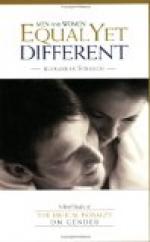Already ladies, by dint of untiring industry and perseverance, have mounted to honorable positions, and have acquired meritorious fame as artists, both in painting and in sculpture. Who, in our times, stands higher on the list of artists than Rosa Bonheur or Miss Hosmer? In the study of medicine, women have been met by the most scandalous opposition and insult by those conservators of good morals, male medical students. Yet, believing that women were as capable of acquiring skill in the healing art as men, and that, where the peculiar diseases of women were concerned, they were better adapted to it, and that there was less impropriety in their attending their own sex than in men doing so, they persevered, and have won for themselves honorable distinction. That women have, for years, distinguished themselves in connection with medical science, may be seen from the following interesting historical facts presented by Caroline H. Ball:
Madame Francoise, the midwife of Catharine de Medici, lectured ably to students of both sexes. James Guillemeau was a French surgeon of great eminence, who died in 1813; but the obstetrical observations which gave value to his books were contributed by Madame Veronne. It was to the Countess of Cinchon, and the influence which she used at every court in Europe, and finally at the Court of Rome, that the world owed the use of Peruvian bark, and consequently of quinine. Its early name, “Jesuit’s Bark,” showed one step of her process. (See “Anastasis Corticis Peruviani, Seu China Defensis.”) Madame Breton patented a system of artificial nourishment for infants, in use in France as late as 1830.
At the age of twenty-four, in the year 1736, Elizabeth Blackwell, of London, published a work on Medical Botany. It was in three volumes, folio, well illustrated, and was the first of its kind in any country. Madame Ducoudray, born in Paris, 1712, was the first lecturer who used a manikin, which she herself invented and perfected. Physicians persist in ignoring this fact, although it was publicly approved by the French Academy of Surgeons, December 1, 1758.
Morandi, born in Bologna in 1716, and Beheron, born at Paris in 1730, invented and perfected the use of wax preparations to represent diseases. Beheron’s collection was purchased by Catharine II, of Russia, and went to St. Petersburg. Hunter acknowledged his obligations to her. Morandi’s collection, at Bologna, was visited and purchased by Joseph II. She was Professor of Anatomy at the university. Lady Mary Wortley Montague introduced inoculation into Europe; and the intelligent observation of a farmer’s wife led Dr. Jenner to his experiments with vaccine matter.




